Our favourite places to stay on this sleepy Cebu island.
10 Lenten Food in the Philippines to Eat During the Holy Week

Don’t let the absence of meat get in the way of eating a hearty meal during the Holy Week. There are plenty of delicious Lenten-friendly food options in the Philippines that Pinoys serve during their abstinence from eating pork, chicken, or beef. In this season, fruits, vegetables, and seafood dominate most restaurant menus, most having lighter and more subdued flavours than the usual Pinoy dish. Looking to spice up your meal plan for the week? Keep reading, then!
Also read: 10 Stunning Churches in the Philippines Every Pinoy Must Visit
Lenten food in the Philippines from the sea
1. Sinigang na hipon
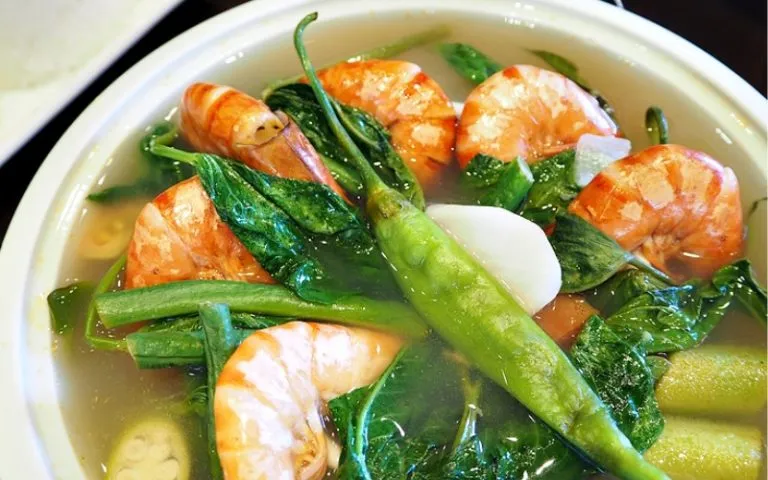
Sinigang na hipon (shrimp tamarind soup) is a great alternative for those who prefer soup dishes. There is a lot of character beneath this light soup broth, starting with its flavourful protein. Shrimp broth can be versatile; depending on the vegetables in the stock, it can be either sweet or sour once cooked. Regardless, sinigang na hipon embodies guilt-free Lenten food in the Philippines because it’s light on the stomach.
For a sweeter seafood soup, try sinigang na bayabas (guava soup), a fruitier cousin to the ordinary sinigang. Traditionally, this fruit-based soup has bangus (milkfish) as its protein. Try it out this Lenten season!
2. Paksiw na bangus
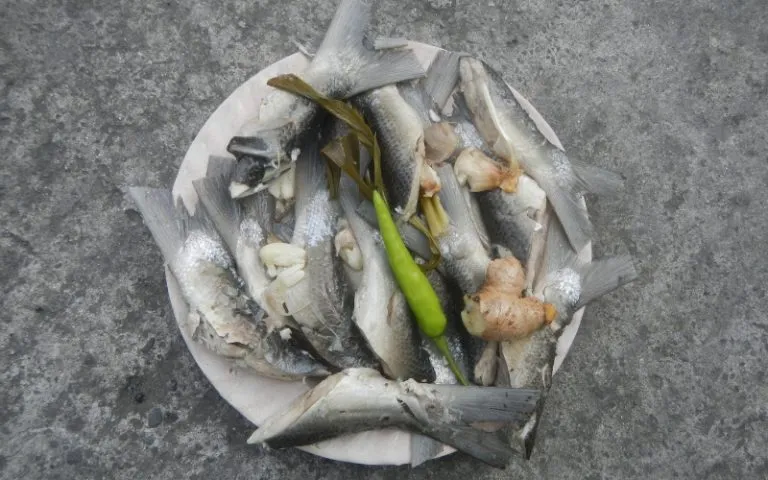
Speaking of bangus, one of the most popular Lenten food in the Philippines is paksiw na bangus (milkfish stewed in vinegar). While there is also lechon paksiw (roasted pig stewed in vinegar), fish should be the main protein during Lent! Since paksiw stews the fish in vinegar, sour notes to the dish should be obvious. Lovers of this dish strike a balance to that acidity by adding a bit of patis (fish sauce) or bagoong (shrimp paste). Sometimes, a medley of vegetables makes it in paksiw na bangus, so expect anything from okra, eggplant, or ampalaya in the dish.
3. Kinilaw
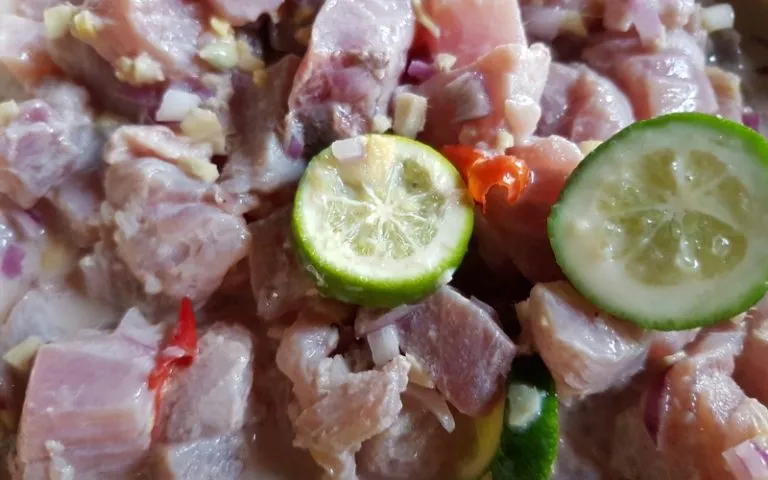
This is the Filipino version of fish ceviche, the major difference being their ingredients for acidity. Kinilaw uses vinegar as a marinade to “cook” raw fish or seafood instead of citrus fruits like lemon and lime. Kinilaw on its own is an excellent appetiser, but variations that include coconut milk, for example, add another dimension to the dish.
4. Kasola
Some Filipinos would say that the Lenten season isn’t Lent without a serving of kasola on the lunch table. It is a simple fish stew paired with upo (calabash) and is pretty simple to cook. The main protein for this dish is labahita (surgeonfish) and preparation for this fish is crucial. Soaking the fish strips in water should remove excess saltiness. Stew the fish in rice water and let it simmer over low heat. It’s quite the humble dish, befitting the simplicity during Lent.
5. Grilled seafood
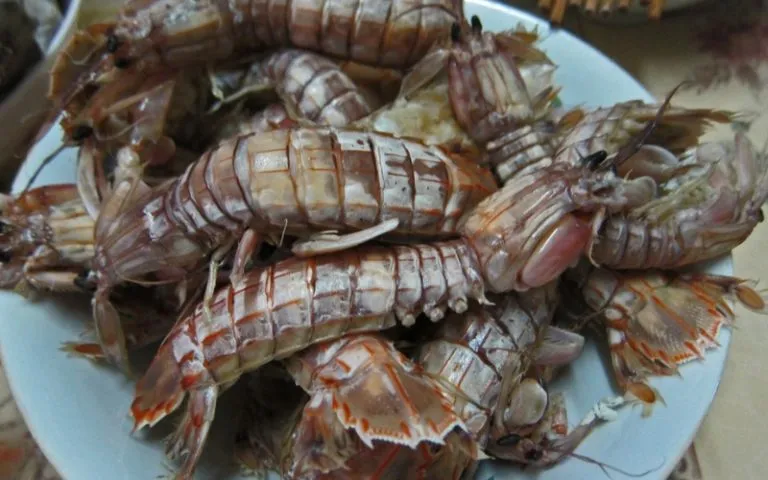
It’s worth mentioning that most families eat through boodle fights over banana leaves during Holy Week. Grilling seafood is a hassle-free option and a very popular choice during Lenten meals. Since utensils are rarely used in boodle fights, de-shelling and deboning seafood is easier with hands!
A stand out to eating grilled seafood in the Philippines is pairing it with vinegar dipping sauces. Soy sauce, pepper, diced onions, and chopped chilli enhance the sauces. And they are just stellar when paired with seafood. From fish such as tilapia, tuna, and bangus, to shellfish like crabs, oysters, and even obscure ones like mantis shrimp, the choices for good grilled seafood in the Philippines are endless.
Also read: Food Itinerary Tips for an Exciting Gastronomic Escapade
Vegetable-based Lenten foods in the Philippines
6. Pinakbet
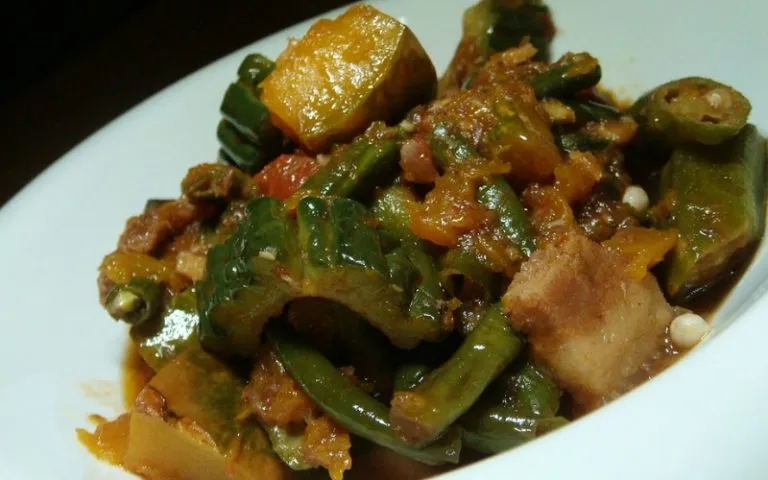
The great vegetable conference! It is pretty evident that pinakbet packs a lot of nutrients. The obvious highlight of this dish is the squash, with its bright orange colour standing out among the greenery from eggplant, ampalaya, okra, the occasional kangkong (water spinach), and string beans. Normally, this vegetable medley has bits of shrivelled pork or shrimp, so be sure to remove the meat when eating this during Lent.
Also read: Vegetarian and Vegan Travel Tips from 6 Plant-Based Pinoys
7. Lumpiang sariwa
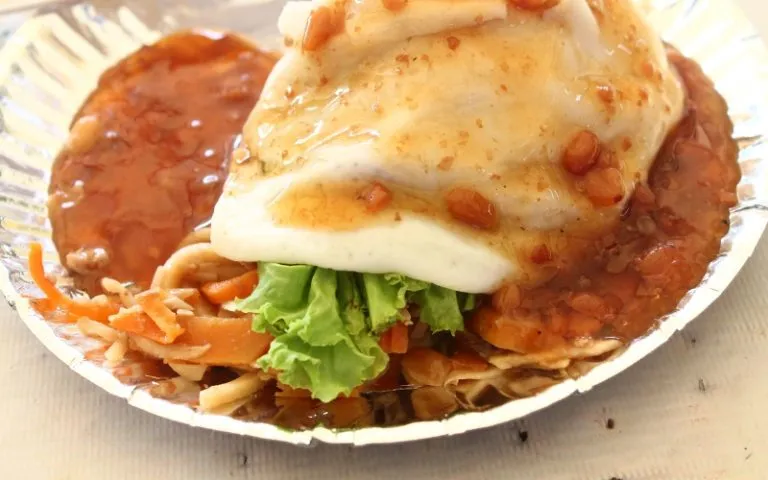
This dish borrows a few techniques and flavours from Cantonese cuisine but there is a key difference. Lumpiang sariwa is essentially fresh Chinese spring rolls but with Filipino preferences applied. Diced vegetables like carrots, string beans, and, sometimes, even sweet potatoes, lay over a piece of lettuce and a rice wrap. It is then elegantly rolled and served with a sweet sauce made of sugar, soy sauce, and cornstarch.
8. Ginisang munggo
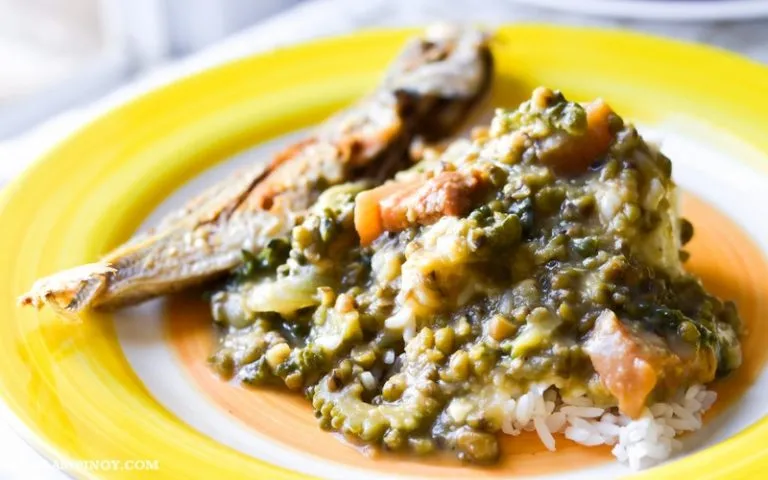
Ginisang munggo (sauteed mung beans) is almost a staple lunch, maybe even superstition, for Filipinos on Fridays. This idea is actually derived from meat abstinence every Friday after Ash Wednesday within 40 days. The practice has carried over past Lent, making Fridays a bit healthier than usual. Ginisang munggo is often paired with chicharon (deep-fried pork rinds), but since it’s Lent, a good alternative for the pig skin is fish.
9. Laing
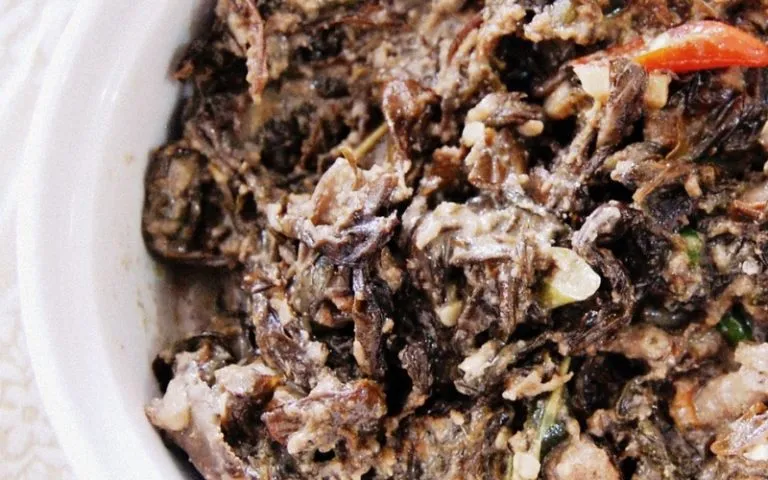
What was a native dish in Bicol, laing (taro leaves stewed in coconut milk) is now an iconic Lenten food option in the Philippines. Taro leaves have a nutty and earthy note to their taste. Stewing these leaves in coconut milk adds a creamy texture to contain the complex taro leaf flavour. Laing is so good that it’s become very popular as a foundation for many gourmet Filipino fusion dishes.
Fruit-based Lenten food in the Philippines
10. Ginataang langka
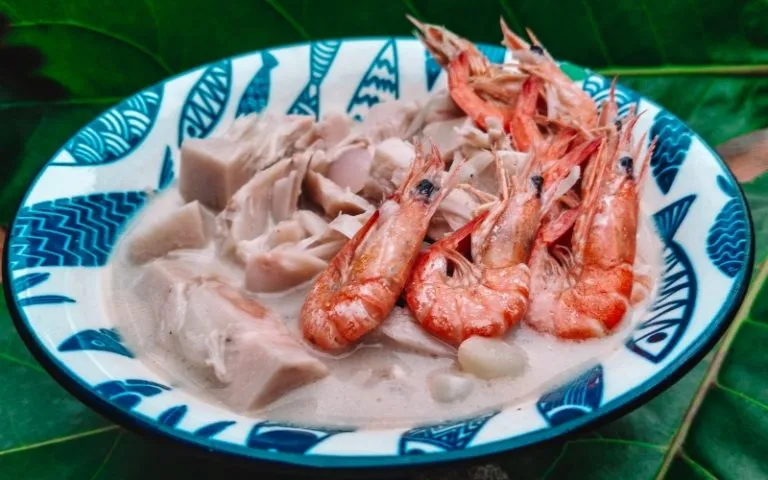
Lenten food in the Philippines proves that even desserts can be guilt-free. Ginataang langka (jackfruit in coconut milk) is a very versatile dish. Through a few modifications, it can be an appetiser or a dessert. For its savoury version, coconut cream cooks slices of jackfruit along with minced onions, garlic, and tomatoes. The recipe for ginataang langka sees an overhaul to the jackfruit’s partnered ingredients. Coconut cream still stews the jackfruit, but with other sweet components like tapioca, plantains, and sweet potato instead.
Also read: Vegan Filipino Dishes Are This Plant-Based Kitchen’s Speciality
There is an intangible quality to identifying Lenten food in the Philippines — its austerity. While there are so many dishes in Filipino cuisine that use complicated techniques, and, sometimes, excessive ingredients, these simple dishes remind us that brilliant flavours can come from the humblest ideas.
Featured image credit: bugking88 via Canva Pro
Published at
About Author
Aldous Vince Cabildo
Subscribe our Newsletter
Get our weekly tips and travel news!
Recommended Articles
10 Bantayan Island Resorts, Hotels, and Rentals for Your Tropical Escape 10 Best Banawe Restaurants for a Mouthwatering Food Trip in QC The promise of new flavours beckons from Banawe.
14 Best Credit Cards for Travel in the Philippines The only plastic we need for travel.
10 Best Mountain Cafes in the Philippines for Your Peak Coffee Experience Coffee date on the mountains, anyone?
10 Family Outing Ideas in Metro Manila Under ₱500 Looking for a weekend bonding with the family under ₱500? Head to these places, pronto!
Latest Articles
Where Filipinos Can Experience Cold Weather Without a Visa With jaw-dropping sceneries!
How the Kennon Road Temporary Closure Impacts Your Baguio Getaway Heading up to Baguio might be trickier now.
Japan Cherry Blossom Forecast 2025: When and Where to See Sakura The cherry blossom season is almost here!
Visit the National Museum of the Philippines: Now Open Daily with Free Admission Immerse yourself in Philippines' rich history.
A List of All the Best Places to Visit in Asia in 2025 Time to make a 2025 travel bucket list.

